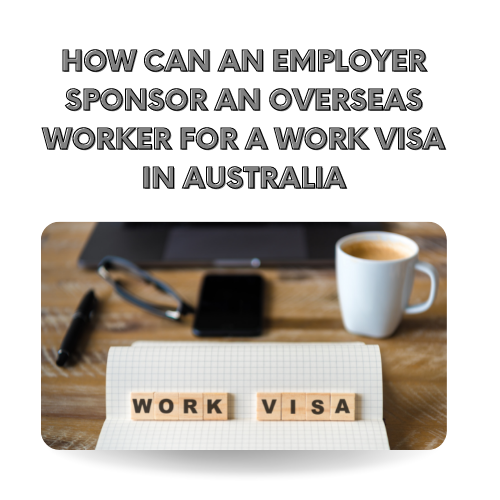
07 Apr How Can An Employer Sponsor An Overseas Worker For A Work Visa In Australia?
If you’re considering hiring a worker temporarily or even permanently in Australia for your business, this guide is for you.
A business that is legally operating in Australia may hire and sponsor a foreign worker for up to four (4) years (5 for Hong Kong nationals), depending on the strategic goals and business structure of the company and the eligibility of the skilled overseas or foreign worker.
While the Government of Australia has allowed hiring of foreign workers to work in Australian businesses, there are several safeguards that exists in employer sponsored visas which are designed to safeguard Australian citizens in making sure that they are not displaced and that foreign workers are to complement and support businesses.
These safeguards, which are stated in the DHA website, are included in the criteria that Australian businesses and potential overseas workers should be mindful of when applying for sponsorship and working visas.
- Requiring a salary justification report (AMSR) for subclass 482 visa, subclass 186 visa, subclass 494 Regional Sponsored, 407 Training Visa (not essential, but highly recommended). This document will show that you are paying the potential overseas worker no less, than the applicable market salary rate for the occupation.
- Mandating a minimum salary of $53,900 AUD before superannuation and taxes.
- Limiting the occupations that are eligible for employer sponsorship to only those determined to be in demand in the Australian labour market by the Department of Education, Skills, and Employment. The occupation, position or role must be listed on the eligible skilled occupations. If the occupation, position, or role is not in the list of skilled occupations, employment may still be an option under a labour agreement.
- Requiring employers to contribute to the Skilling Australians Fund
- Requiring overseas workers to hold relevant Australian registration, licences, and certificates, when applicable
- Skills, English language, age, and work experience requirements for overseas workers
Aside from these general requirements, there are several visa types that requires the sponsoring business to show that they can’t find a suitable Australian worker for the role and this is done by providing evidence through a Labour Market Testing Report (LMT) to show that Australians are given job opportunities and are being prioritised. The LMT requirement is available for all relevant immigration visa subclasses, including the highly popular visa subclass 482 Temporary Skill Shortage (TSS), subclass 186 Employer Nomination Scheme (DE) (highly recommended for genuineness reasons), and subclass 494 Regional Sponsored (Provisional) visas, unless exempt from this requirement.
REQUIREMENTS FOR SPONSORING AUSTRALIAN BUSINESSES
STAGE 1. Apply to become an approved sponsor or nominator to sponsor a skilled worker
- To be able to hire an overseas skilled worker the Australian employer must be legally established and currently operation in or outside Australia. There is no required time that the business has been trading, nor a requirement for business size, turnover, or profit.
- There must be no adverse information regarding the Australian employer’s business that would affect its suitability as a sponsor.
- The business must show that it is sustainable and can continue to sponsor the worker, financially.
- Additional requirements include showing that the business have a strong record, or a demonstrated commitment to prioritising local labour, Australian employees when possible and must expressly declare that the business will not engage in discriminatory recruitment processes.
Once approved, the Sponsor can hire foreign skilled workers for the next 5 years.
This stage is not requires for the 186 Direct Entry visa.
STAGE 2. Nomination of the occupation (approval of the position/role being offered to the potential overseas worker)
In this stage, the employer needs to identify the overseas skilled worker they want to hire for the position/role in the business, and must therefore satisfy the following requirements:
- The position/role must be on the Skilled Occupation List and must be essential to the nature of the business.
- The position/role must be highly relevant to the nominated overseas worker’s background and qualifications. These requirements based on occupation suitability can be satisfied with a Genuine Position Letter and accompanying Position Description to show that the applicant meets all the Department’s requirements in relation to the nominated occupation.
- The employer must show evidence that the business could not find a suitable, equivalent Australian worker to fill the position/role via labour market testing.
- The salary and wages offered must meet the minimum standards set by the DHA and the average markets indicated for the role via salary justification.
- The employer must contribute to the Skilling Australian Fund (SAF). A fund that is used to train Australian workers through apprenticeships and over similar upskilling programs. The amount varies, depending on the business turnover and the period of the temporary visa.



No Comments